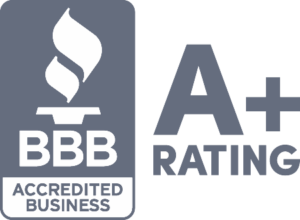1. What is Security in Small Business Loans?
Security in loan financing involves collateral or guarantees that small businesses provide to online lenders to reduce the risk of default. At Online Lenders, securing loans with appropriate collateral is vital to minimize potential losses and ensure sustainable lending practices.
Primary Goals of Security:
- Risk Mitigation: Protects us against potential borrower defaults.
- Facilitates Loan Approval: Increases the likelihood of loan approval, especially for businesses with limited credit histories.
- Better Loan Terms: Allows businesses to access loans with competitive interest rates and flexible repayment schedules.
2. Common Types of Security for Small Business Loans
Offering a variety of collateral options enables small businesses to leverage different assets to secure financing.
a. Real Estate and Property
- Commercial Property: Office buildings, warehouses, and retail spaces owned by the business.
- Residential Property: Personal residences, though less common.
b. Personal Assets
- Vehicles: Company-owned cars, trucks, or other vehicles.
- Personal Guarantees: Owners pledge personal assets, such as homes or savings, to secure the loan.
c. Business Assets
- Equipment and Machinery: Essential tools and machinery used in operations.
- Inventory: Stock of goods available for sale.
- Accounts Receivable: Outstanding invoices or money owed by customers.
d. Financial Assets
- Cash and Equivalents: Savings accounts, certificates of deposit (CDs), or other liquid assets.
- Investments: Stocks, bonds, or other securities held by the business.
e. Intellectual Property
- Patents, Trademarks, and Copyrights: Legal rights that protect the business’s products or services.
f. Other Collateral
- Future Revenue Streams: Commitments for future sales or contracts.
- Licenses and Permits: Valuable business licenses that can be leveraged as collateral.
3. How We Secure Your Loan Online
Our efficient online lending process ensures that security is seamlessly integrated to benefit both lenders and borrowers.
a. Application Process
- Loan Application: Submit a detailed application outlining your financial needs and business operations.
- Security Assessment: We evaluate your assets to determine suitable collateral.
- Credit Evaluation: Assess creditworthiness through credit scores, financial statements, and cash flow analysis.
b. Collateral Evaluation
- Valuation: Professional appraisals or internal assessments to determine the market value of the collateral.
- Verification: Confirm legal ownership and check for existing liens or claims.
c. Loan Structuring
- Loan-to-Value (LTV) Ratio: Establish the maximum loan amount based on collateral value, typically up to 80% of the asset's worth.
- Interest Rates and Terms: Set competitive rates and flexible repayment schedules based on the quality and value of the security.
d. Legal Documentation
- Security Agreement: A legal contract outlining the terms of the collateral pledge.
e. Disbursement and Monitoring
- Fund Release: Provide loan funds once all security requirements are satisfied.
- Ongoing Monitoring: Regularly assess the value and status of collateral throughout the loan term.
f. Enforcement in Case of Default
- Repossession or Foreclosure: Take possession of the collateral to recover the outstanding loan amount.
- Legal Action: Initiate court proceedings if necessary to enforce security interests.
4. Best Practices for Effective Security Management
Implementing best practices ensures that security management is efficient, transparent, and effective.
a. Thorough Due Diligence
- Asset Verification: Confirm the existence, ownership, and value of proposed collateral.
- Risk Assessment: Evaluate potential risks associated with the collateral, including market volatility and depreciation rates.
b. Transparent Communication
- Clear Terms: Ensure borrowers fully understand security requirements and implications.
- Regular Updates: Keep borrowers informed about changes in collateral valuation or loan terms.
c. Flexible Security Options
- Diverse Collateral Acceptance: Accommodate various types of collateral to suit different businesses.
- Hybrid Security Models: Combine multiple forms of security to spread and reduce risk.
d. Efficient Documentation Processes
- Digital Documentation: Utilize secure online platforms for submitting and storing legal documents.
- Automated Filings: Streamline the process of perfecting security interests through electronic filings.
e. Continuous Monitoring and Support
- Asset Monitoring Tools: Implement technology to track the status and value of collateral in real-time.
- Borrower Support: Offer guidance on maintaining and protecting collateral.
5. Benefits of Strong Security Management
Effective security management provides significant advantages for both lenders and small businesses.
a. Access to Larger Loan Amounts
- Businesses can secure higher funding by offering valuable collateral.
b. Improved Loan Terms
- Lower interest rates and longer repayment periods are often available when strong security is provided.
c. Enhanced Credibility
- Demonstrating the ability to pledge assets can improve a business’s credibility with lenders.
d. Future Financing Opportunities
- Successfully managing secured loans paves the way for easier access to additional financing in the future.
6. Overcoming Challenges in Security Management
While security offers numerous benefits, it also presents certain challenges that must be carefully managed.
a. Valuation Fluctuations
- The value of assets like inventory or accounts receivable can fluctuate, affecting loan security.
b. Legal and Regulatory Compliance
- Ensure all security interests comply with relevant laws and regulations to avoid legal disputes.
c. Collateral Management Costs
- Costs associated with valuing, securing, and monitoring collateral can impact operations.
d. Borrower Reluctance
- Some small businesses may hesitate to pledge valuable assets, fearing the loss of essential property.
8. Innovative Security Solutions for Modern Lending
Embracing innovation enhances the efficiency and effectiveness of security management.
a. Digital Collateral Platforms
- Utilize blockchain and other secure digital technologies to verify and manage collateral ownership and transfers.
b. Dynamic Collateral Valuation
- Implement real-time data analytics to continuously assess collateral value, allowing for more responsive loan management.
c. Alternative Collateral Types
- Explore non-traditional collateral such as future receivables, subscription-based revenue models, or digital assets.
d. Automated Enforcement Mechanisms
- Develop automated systems for collateral seizure and liquidation in the event of default, reducing recovery times and costs.
8. Real-World Example: Security in Action
Scenario: A small e-commerce business seeks a $50,000 loan to expand its inventory and marketing efforts. As an online lender, Online Lenders assesses the business’s security options.
Steps Taken:
- Collateral Identification: The business offers its existing inventory valued at $60,000 and a personal guarantee from the owner.
- Valuation and Verification: A professional appraisal confirms the inventory’s value, and legal documents verify ownership.
- Loan Structuring: Based on an 80% Loan-to-Value ratio, the $50,000 loan is well-supported by the collateral.
- Documentation: A digital security agreement is signed, and a UCC-1 filing is completed electronically.
- Monitoring: We use inventory management software to monitor stock levels and value in real-time.
- Outcome: The business successfully expands and repays the loan on schedule. The strong security framework minimizes risk and fosters a trustworthy lender-borrower relationship.
9. Conclusion
Security in small business financing is the foundation of sustainable lending practices for Online Lenders. By understanding the various types of security, implementing best practices, and leveraging innovative technologies, we effectively mitigate risks while providing valuable financial support to small businesses across the USA. Proper security management not only safeguards us as lenders but also empowers businesses to access the capital needed for growth and success.


